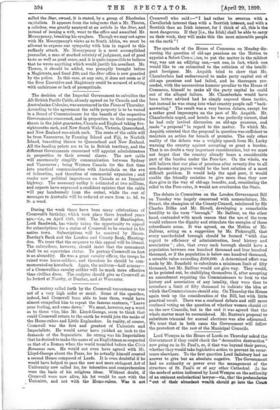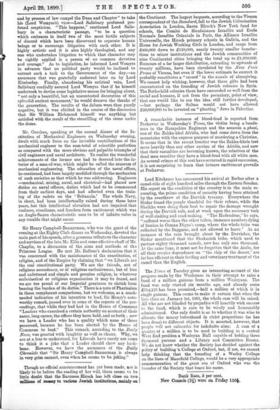Lord Wemyss in the House of Lords on Thursday asked
the Government if they could check the "decorative destruction" now going on in St. Paul's, or, if that was beyond their power, whether they would take legislative action to prevent its recur- rence elsewhere. To the first question Lord Salisbury had no answer to give but an absolute negative. The Government had no authority or power over the management of the structure of St. Paul's or of any other Cathedral. As for the mode of action indicated by Lord Wemyss on the authority of an eminent ecclesiastical lawyer—viz., that the prebendaries "out of their abundant wealth should go into the Court and by process of law compel the Dean and Chapter" to take his (Lord Wemyss's) view—Lord Salisbury professed pro- found scepticism. "This happens," continued Lord Salis- bury in a characteristic passage, "to be a question which embraces in itself two of the most fertile subjects of discord which have been discovered to separate human beings or to encourage litigation with each other. It is highly artistic and it is also highly theological, and any one who undertakes litigation to which that character may be rightly applied is a person of- no common devotion and courage." As to legislation, he informed Lord Wemyss in advance that no political party would be inclined to entrust such a task to the Government of the day,—an assurance that was gratefully endorsed later on by Lord Kimberley. Finally, abandoning his satirical vein, Lord Salisbury cordially assured Lord Wemyss that if he himself undertook to devise some legislative means for bringing about, "not only a, beautiful, but an uncontested decoration of this splendid ancient monument," he would deserve the thanks of the generation. The results of the debate were thus purely negative, but it was elicited in the course of the discussion that Sir William Richmond himself was anything but satisfied with the result of the stencilling of the stone under the dome.























































 Previous page
Previous page